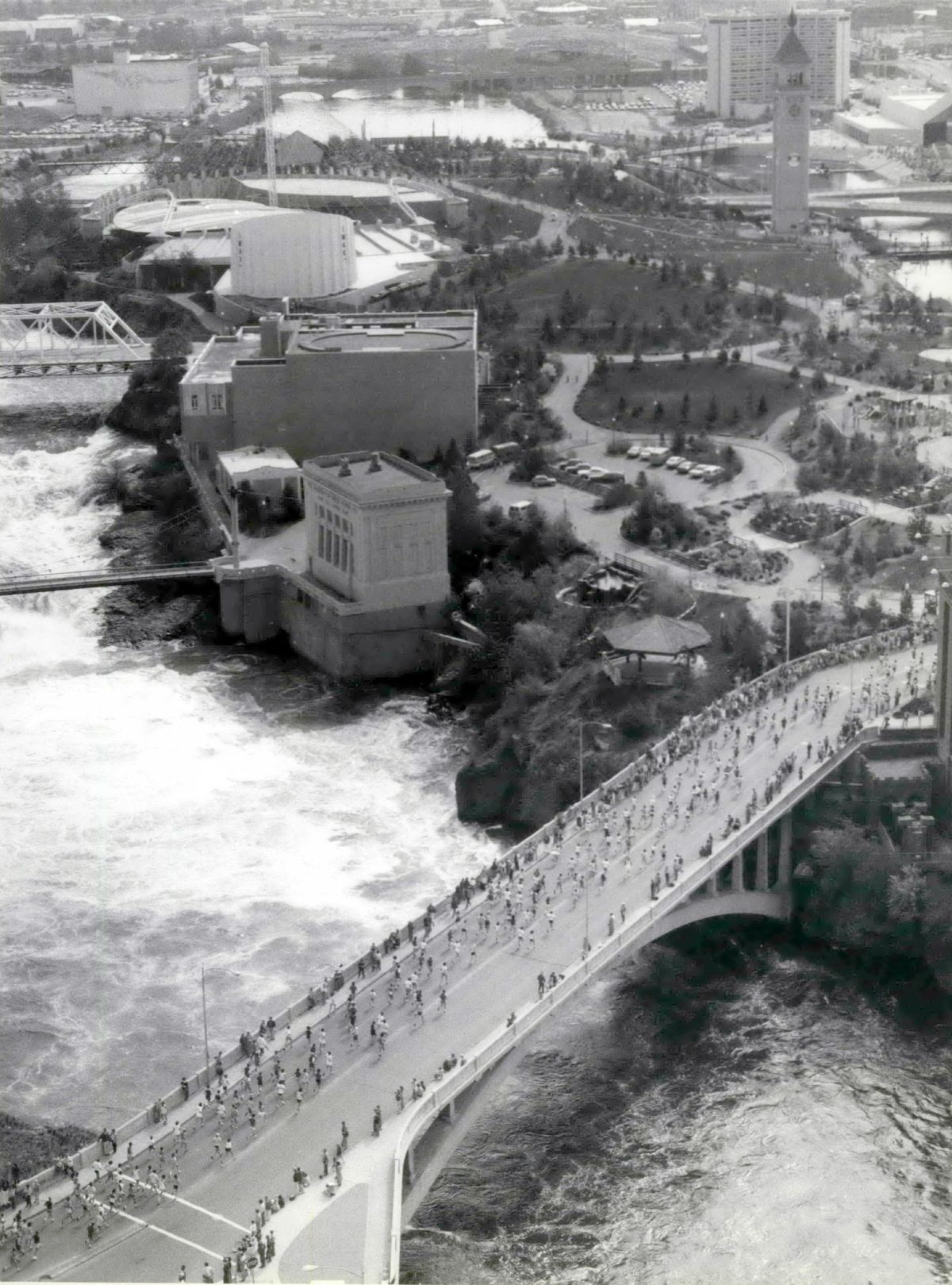Then and Now: Bloomsday race

The annual Bloomsday road race began in 1977 with a field of 1,198 runners. It has always been run on the first Sunday in May.
Until this year. The race and its attendant festivities have been rescheduled to Sept. 20 because of the outbreak of coronavirus. The epidemic is the only thing that has stopped tens of thousands of runners, volunteers and spectators from taking to the streets for the 12-kilometer race every spring.
Seen in the above photo, the 1981 race had more than 17,000 runners registered for the run and 15,546 finishers.
The 1981 event started in the morning for the first time to avoid afternoon heat. It was a cool 50 degrees at race time.
But Bloomsday didn’t come out of nowhere. It followed several years of an annual Spokane Road Race, a 6-mile contest that began in 1966. The course started at the Ferris High School track, then took runners over the hilly, rough roads of Glenrose and Moran prairies.
Running, both competitive and as a healthy pastime, was growing.
One of attractions of the first race would be Gerry Lindgren. Two years earlier, the Rogers High School senior ran 5,000 meters in 13:44, a U.S. high school record that stood for 40 years.
At only 18, Lindgren beat seasoned Russian Olympians at an international meet. The Spokane running sensation went to the 1964 Tokyo Olympics but was hampered by an ankle injury. Teammate Billy Mills won the gold.
At the last minute, favorites Lindgren and Rick Riley fell ill and skipped the Spokane Road Race. University High grad Dan Clark won the first race.
Lindgren went on to Washington State, where he won 11 of the 12 NCAA championships he entered, including one over newcomer Steve Prefontaine of Oregon in 1969.
Another collegiate athlete named Don Kardong won the Spokane Road Race in 1973 and 1975, the latter while breaking the course record by more than two minutes. He competed in the marathon at the 1976 Montreal Olympics, finishing fourth by just 3.2 seconds.
Moving to Spokane, Kardong suggested to a reporter that Spokane should have a downtown running event. With volunteer help from the Spokane Jaycees and sponsorship by Medical Service Corp., Kardong organized the first Bloomsday race.